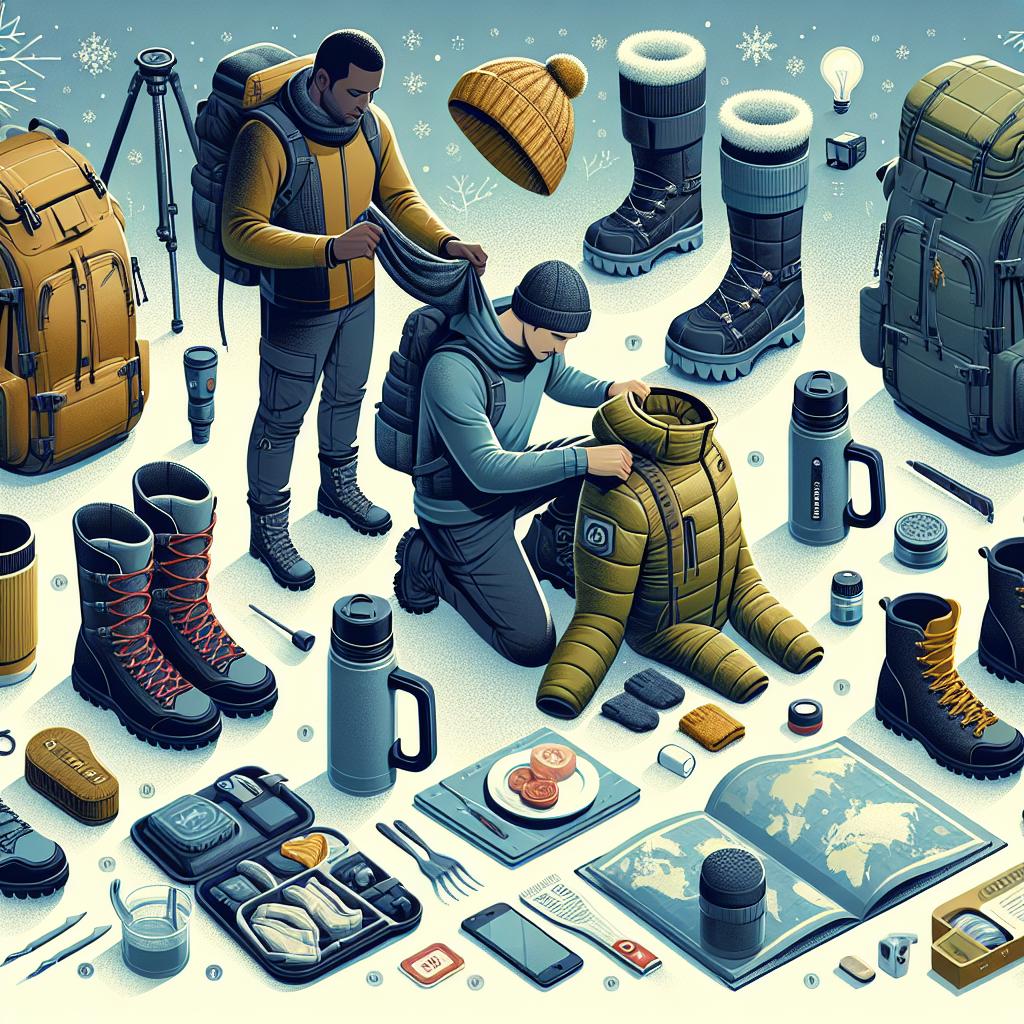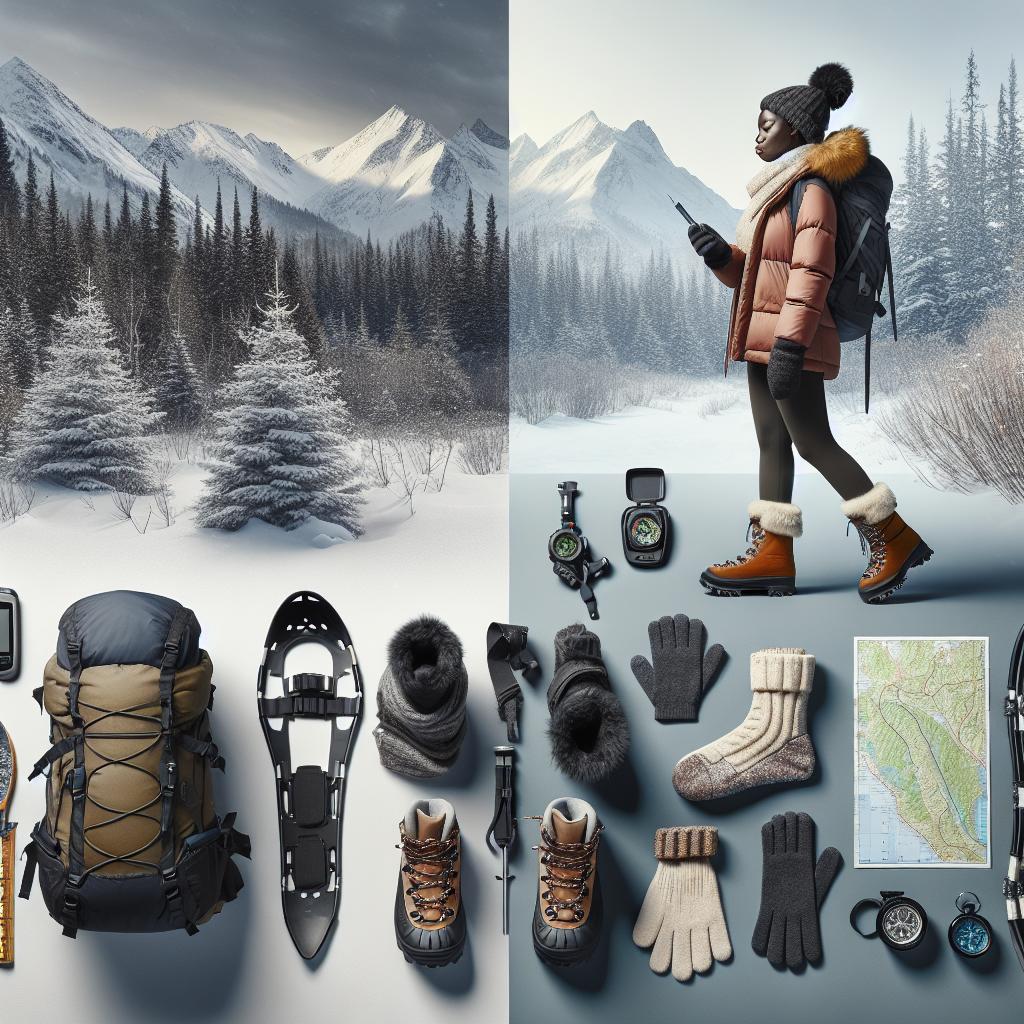Nestled in the heart of the Appalachian Mountains, the Great Smoky Mountains National Park transforms into a serene winter wonderland, inviting nature enthusiasts to explore its snowy expanses. As the frost decorates ancient trees and wildlife stirs through the crisp, quiet forest, adventurers have a unique opportunity to track the diverse array of animals that call this majestic landscape home. This article guides you through the best hiking trails for winter wildlife tracking in the Great Smokies, where every footprint in the snow tells a story and each frosty morning holds the promise of discovery. Prepare your senses for an unforgettable winter escapade, where the silent beauty of nature reveals its most intimate secrets.
Ideal Winter Trails for Novice Trackers
For those new to the world of winter wildlife tracking, the Great Smokies offer a variety of gentle trails that provide ample opportunities to experience the serene beauty of the season while spotting native wildlife. Here are some top-notch trail options perfect for beginners:
- Little River Trail – This easy-to-navigate path winds along a tranquil river, making it an excellent choice for spotting river otters and various bird species. Its gentle incline and well-marked route ensure an enjoyable hike.
- Laurel Falls Trail – A paved trail leading to the picturesque Laurel Falls is ideal for beginners. The falls themselves become a stunning ice sculpture in the winter, and along the way, you might encounter playful squirrels and deer.
- Porters Creek Trail – This trail provides a fascinating mix of history and nature, with old cabins and relics from the past. Winter wildlife such as wild turkeys and foxes often frequent the area, providing great tracking opportunities.
Consider the table below for quick insights into each trail’s key features:
| Trail | Distance | Feature Wildlife |
|---|---|---|
| Little River Trail | 4.9 miles (one-way) | River otters, various birds |
| Laurel Falls Trail | 2.3 miles (round trip) | Squirrels, deer |
| Porters Creek Trail | 4 miles (one-way) | Wild turkeys, foxes |

Top Spots to Observe Elk and Other Majestic Creatures
Venturing into the Great Smoky Mountains during winter offers a unique opportunity to witness some of the most awe-inspiring wildlife the region has to offer. **Cades Cove** is one of the prime locations where one can observe a diverse array of animals amidst a picturesque, frost-kissed backdrop. This scenic loop is well-known for its elk sightings, especially at dawn and dusk. As the sun rises, the snowy landscape comes alive with the rustle of deer, and occasionally, you might even spot a black bear rummaging for the last remnants of fall. Listeners might also catch the evocative bugle call of the elk, echoing through the icy forest. Cades Cove offers an unparalleled experience for those who tread its trails patiently.
In addition to Cades Cove, another must-visit location is **Cataloochee Valley**. The crisp air here is ideal for spotting not only elk but also an array of feathered friends such as woodpeckers and wild turkeys. **Winter hikes in Cataloochee** often reveal hidden treasures like the historic Palmer House and the serene waters of Pretty Hollow Gap. For a more structured experience, visitors can also join **guided tours** organized during the colder months, which provide insightful information about the habitat and behavior of the wildlife. To help plan your visit, below is a table highlighting some key features of these spots:
| Spot | Key Features |
|---|---|
| Cades Cove | Elk sightings, scenic loop, historic structures |
| Cataloochee Valley | Guided tours, birdwatching, historic Palmer House |

Ensuring Safety and Comfort on Chilly Hikes
Cold weather hiking in the Great Smokies poses unique challenges, but with the right precautions, it can be an exhilarating adventure. **Layering** is essential; start with a moisture-wicking base layer, add an insulating middle layer (like fleece or down), and finish with a waterproof and windproof outer shell. Pack additional items including insulated gloves, a knitted hat, and a neck gaiter to protect against the cold. A high-quality pair of waterproof hiking boots with **thermal socks** will keep your feet warm and dry, especially when trekking through snow-covered paths or shallow creeks.
To ensure your safety and comfort, carry a well-stocked **emergency kit** and make sure your phone is fully charged. It’s advisable to hike with a buddy and let someone know your itinerary. **Trail maps** and a reliable GPS device are indispensable for navigating the mountainous terrain, where signage can be sparse. Stick to trails that are known for winter hiking to avoid unexpected closures or hazardous conditions. Some recommended items to pack include:
- High-calorie snacks
- Insulated water bottle
- Extra batteries
- Portable hand warmers
- First-aid kit
| Item | Purpose |
|---|---|
| Moisture-wicking base layer | Keeps sweat away |
| Insulating middle layer | Traps body heat |
| Waterproof outer shell | Protects against wind and snow |
| Trail map & GPS | Navigation aid |

Choose the Right Gear for Winter Tracking Adventures
When venturing into the wintry wilderness of the Great Smokies, it is crucial to equip yourself with **the right gear** to ensure both safety and comfort. Prioritize layering with performance fabrics. Start with a moisture-wicking base layer to keep sweat off your skin, followed by an insulating layer like fleece, and a durable, waterproof outer shell. This combination will help you adapt to changing weather conditions. Don’t forget about your extremities—waterproof gloves, thick socks, and a well-insulated hat are must-haves.
**Choosing the right footwear** is equally important. Sturdy, insulated boots with good ankle support and a dependable tread will help you navigate snow and icy patches. Microspikes or crampons provide extra grip on slippery surfaces. Moreover, carrying trekking poles can offer additional stability. Here’s a quick comparison to guide you:
| Item | Recommendation | Why |
|---|---|---|
| Base Layer | Merino Wool | Wicks moisture, keeps warmth |
| Mid Layer | Fleece Jacket | Provides insulation |
| Outer Shell | Gore-Tex Jacket | Waterproof & windproof |
| Footwear | Insulated Hiking Boots | Warmth & ankle support |
Q&A
Q: What makes the Great Smoky Mountains a prime destination for winter wildlife tracking?
A: The Great Smoky Mountains offer a unique blend of rich biodiversity and stunning winter landscapes, creating a perfect backdrop for wildlife tracking. As snow blankets the ground, animal tracks become more visible and easier to follow, while the leafless trees provide clearer sightlines. The diverse habitats, from balds and cove hardwood forests to pine-oak woodlands, attract a wide array of wildlife, including white-tailed deer, elk, black bears, and red foxes, making the Great Smokies an unparalleled winter wonderland for naturalists and adventurers alike.
Q: Which trails in the Great Smokies are considered the best for winter wildlife tracking?
A: Some of the most favored trails for winter wildlife tracking in the Great Smokies include:
-
Cades Cove Loop: This 11-mile loop offers stunning valley scenery and is prime terrain for spotting herd animals like elk and white-tailed deer. It’s rich in wildlife and history, making it a perennial favorite among trackers.
-
Oconaluftee River Trail: Easy and accessible, this trail runs alongside the river and is frequented by otters and various bird species. The peaceful river ambiance is a delightful bonus.
-
Clingmans Dome: While conditions can be more challenging due to elevation, this trail provides opportunities to spot turkeys, raptors, and smaller mammals. The panoramic views from the top make the effort worthwhile.
-
Roaring Fork Motor Nature Trail: Known for its frosty beauty, this trail offers a mix of picturesque scenes and animal tracking possibilities, including sightings of black bears and red foxes near the old homesteads.
Q: What should hikers keep in mind when tracking wildlife in the winter?
A: Winter wildlife tracking requires both preparation and respect for the natural environment. Here are a few key considerations:
-
Dress Appropriately: Layering is crucial to adapting to varying temperatures. Waterproof boots and insulated clothing will keep you warm and dry while navigating snowy trails.
-
Pack Wisely: Bring essentials such as a map, compass, and sufficient food and water. A thermos with a hot beverage can be a great morale booster on chilly days.
-
Leave No Trace: Always follow the Leave No Trace principles. Respect wildlife by keeping a safe distance and avoiding the disturbance of their natural behaviors.
-
Safety First: Be aware of weather conditions and start hikes early to ensure you’re off the trails before dark. Consider using trekking poles for stability in icy conditions.
Q: Are there any specific animals that are particularly active or easier to track during the winter in the Great Smokies?
A: Winter in the Great Smokies reveals a range of wildlife activity patterns. White-tailed deer and elk are among the most noticeable due to their movement in search of food. Tracks in the snow often reveal their trails. Smaller mammals, such as rabbits and squirrels, also leave distinct marks. Birds of prey, such as hawks and owls, are often spotted scanning for rodents, whose tracks crisscross the open fields. Black bears, though primarily hibernating, may occasionally leave their dens, leaving behind telltale signs for the observant tracker.
Q: Can beginners also enjoy winter wildlife tracking, or is it more suited for experienced hikers?
A: Winter wildlife tracking in the Great Smokies can be enjoyed by both beginners and experienced hikers. The key is to select trails that match your skill level and to be well-prepared. Beginner-friendly trails, like the Oconaluftee River Trail, offer ease of access and gentle terrains, making them suitable for first-timers. For those seeking more of a challenge, trails like Clingmans Dome provide both a physical test and rewarding wildlife tracking experiences. With the right preparation and a respect for nature, anyone can partake in the exhilarating experience of winter wildlife tracking in these majestic mountains.
To Conclude
As the snow-dappled paths of the Great Smokies call to the adventurers within us, winter unveils a tapestry of nature’s quiet wonder. These trails, each a thread in that grand design, guide us through frost-kissed forests and serene, silent clearings where the secrets of wildlife await discovery. Whether you’re following the elusive prints of a red fox or catching the distant gaze of a white-tailed deer, your journey becomes a narrative woven with whispers of the wild.
So bundle up, lace those boots tightly, and step into the heart of the Smokies. In every track and trace left upon the wintry canvas, you’ll find not just the story of the animals that roam these lands, but also the echo of your own footsteps in nature’s everlasting dance. Happy tracking, and may the wonders of the wild find you this winter season.
